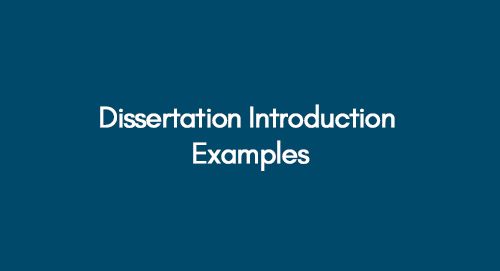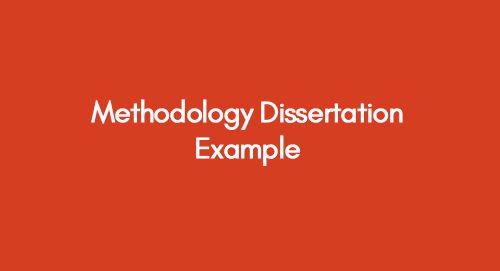
Dissertation Introduction Examples
February 7, 2023
Biomedical Science Dissertation Examples: A Comprehensive Guide
February 8, 2023When it comes to writing a dissertation methodology, the task can seem hectic at first. This section of your dissertation is one of the most crucial parts, as it details the methodology you employed in your research and how it contributes to your findings.
A well-crafted methodology section can add credibility to your research and enhance its value. This blog post will discuss how to write a sophisticated and effective methodology section for your dissertation.
Here we have compiled a list of carefully crafted successful methodology dissertation examples and dissertation methodology example pdf to aid you in understanding of writing a methodology chapter.
Example: 1 National Planning Policy Framework to Creating Sustainable Community
Example: 2 A Comparative Analysis of Corporate Veil Lifting Approaches
Why is dissertation methodology important?
- Replicability and Generalizability
- A thorough methodology section enables other researchers to replicate the study, testing the results and contributing to the overall body of knowledge in the field.
- Additionally, a clear description of the research design and methods can facilitate the generalization of the findings to other populations or contexts.
- Ethical Considerations
- The methodology section should explain any ethical considerations or measures to protect participants and maintain confidentiality.
- By providing transparency around these issues, researchers can ensure that their work meets ethical standards and avoids potential harm to participants or other stakeholders.
- Contribution to the Field
- The methodology section can also contribute to the overall value of the research by providing insights into the strengths and limitations of the research design and methods used.
- By acknowledging these factors and providing recommendations for future research, researchers can further advance the field and build upon their findings.
Formatting Your Methodology Section
The format for writing a dissertation methodology can vary slightly depending on your academic discipline and the specific requirements of your institution. However, in general, the methodology section of a dissertation should follow a similar structure. Here is a basic format that you can use:
Introduction
- Briefly introduce the research question and research objectives.
- Explain the purpose of the methodology section.
Research Design
- Explain the research design clearly, including any theoretical frameworks or models used.
- Describe the data collection and analysis methods used.
- Justify why the chosen methods were appropriate for the research objectives.
Data Collection Methods
- Describe the data collection methods, including the sample size and selection criteria.
- Provide a clear explanation of how the data was collected and recorded.
- Discuss any potential biases or limitations of the data collection methods.
Data Analysis Methods
- Describe the data analysis methods used, including any statistical techniques.
- Provide a clear explanation of how the data was analyzed and interpreted.
- Discuss any potential biases or limitations of the data analysis methods.
Limitations of Research
- Acknowledge any limitations or weaknesses of the research design or methodology.
- Discuss how these limitations may have affected the results.
- Provide recommendations for future research to address these limitations.
Conclusion
- Summarize the key findings and contributions of the methodology section.
- Reiterate the importance of the methodology in the overall research process.
- Provide final thoughts and recommendations.
Remember to consult your dissertation guidelines and academic supervisor for specific requirements and expectations for your methodology section.
Methodology Dissertation Example
In this section, we will go through some professionally written dissertation methodology examples extracted from Premier Dissertation. You can visit the site to gain profound insights into the thesis methodology examples. Review below or download the complete dissertation sample in pdf by clicking the link below.
Methodology Dissertation Sample: The Importance of Procurement Strategy & Impact on Construction Projects
Sample of methodology from the above dissertation sample
Success of Project Delivery is measured by the objectives achieved. It has to be backed up by a suitable procurement system that ensures all services or works are completed on time.
Hence it is extremely important from the point of view of project management to develop a program for the procurement structure.
To complete the project in time, the growth of the procurement plan should be commenced as soon as possible, which is a component of the evaluation and definition phase.
From the perspective of project management, the definition of the most fundamental phase revolves around on;
"How to select and implement the procurement plan, what factor needs to be considered, and is there a strategy that can be followed?"
The primary research question is aimed to be addressed through this research. The methodology of this research is based on two distinct methods of analysis;
Analyze the most frequently used procurement techniques, outlining their methods, approaches, pros, and cons.
Propose a strategic plan/guideline on what factors need to be considered for selecting an optimum procurement strategy for a specific project.
The first part was thoroughly analyzed and presented in the literature review section of this paper. The later section of this paper sheds light on how strategic procurement decision is made in light of the project variables.
Procurement decisions should be justified based on facts and figures to minimize the risk to shareholders.
The sound decisions are based on detailed research and various influential delivery models and procurement procedures that determine which approach is the best for a particular project.
This procedure for finding the desirable method for a project is called "procurement strategy". It includes individual traits, risks and situations.
Key Elements of a Dissertation Methodology Section.
Research Design
Research questions and data collected shape the hypothesis and methodology. So, the research design must align with both. The type of data being collected, the methods of data collection, and the intended outcome of the research should be carefully considered for the research design.
Want to know how to design a Research Question? Follow the link below!
Expert Tips on How to Write a Research Question with Real Examples
Data Collection
The methodology should explain how the data will be collected, including the type of data (qualitative, quantitative, or mixed methods), the sampling method (probability, non-probability, or purposive), and the data collection methods (surveys, interviews, focus groups, etc.).
Follow this link to learn How to Ace Your Data Analysis Dissertation
Data Analysis
The methodology should explain how the data will be analyzed, including the statistical techniques and software used. The analysis should be appropriate for the data collection types and the research question being addressed.
Here is an example of descriptive data analysis from our dissertation methodology sample to grasp how this section needs to be done.
The data collected from the survey was analyzed using both descriptive and inferential statistics.
Descriptive statistics, including standard deviations, means and frequencies, were used to summarise the data and provide an overview of the participant's responses. Inferential statistics, such as independent samples t-tests and one-way ANOVA, were used to test the research hypotheses and determine the significance of the results.
Download the complete dissertation methodology example by clicking here
Validity and Reliability
Your paper will only intrigue readers if its information is reliable and contributes to modern research. The methodology should address the validity and reliability of the research, including the measures taken to ensure that the results are reliable and accurate.
Look at this text from methodology example to understand how to successfully merge data related to reliability.
The data were analyzed using the statistical software SPSS. To ensure the validity of the results, a significance level of alpha = 0.05 was used, and all statistical tests were two-tailed.
Ethics
The methodology should address any ethical considerations related to the research, including the informed consent process, confidentiality, and data protection.
Conclusion
In conclusion, writing a sophisticated and effective methodology section for your dissertation requires careful planning and attention to detail. You should use appropriate vocabulary and terminology to convey your ideas clearly and concisely.
Additionally, you should provide a detailed explanation of the research design and methodology used, including the data collection and analysis methods. By following these tips and tricks, you can create a methodology section that adds credibility to your research and enhances its value.
Get 3+ Free Dissertation Topics within 24 hours?



























